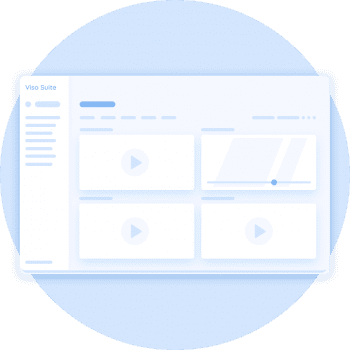Viso Suite provides video data annotation for computer vision. Teams create high-quality datasets using a comprehensive palette of labeling capabilities without transferring data to third-party tools and services. Therefore, your data never leaves the Viso Suite workspace, everything is kept safe in one place and under full control.
Image annotation is a continuous task in the computer vision lifecycle. To maintain and improve AI models, teams need to iteratively collect data and re-train models. Therefore, the end-to-end platform Viso Suite seamlessly integrates image annotation with upstream and downstream tasks – from data collection and import to model training, application development and deployment.
How much data do I need to train computer vision?
In general, the more data you have, the better the algorithm will be. Pre-trained models for object detection, face detection, or pose estimation have been trained on millions of images and hundreds of millions of annotations. This is why training your custom algorithm will require a lot of data. However, new technologies allow training computer vision models with significantly smaller datasets by moving collection and training closer together.
The quality of data used for image annotation greatly impacts the AI model performance and annotation costs. Higher quality data requires a lower volume of data to achieve higher algorithm accuracy and robustness.
Computer Vision with small datasets
Viso Suite lets you use the same hardware and sensor/camera setup for data collection that is used to run the AI application with the model. As a result, you can achieve much better AI vision performance with significantly smaller datasets by focusing on highly relevant situations in a less varying setting.
This cutting-edge method allows to dramatically lower the amount of labor and costs of image annotation. The ability to use small datasets further reduces the number of images needed to be collected and prepared. There is less image optimization and re-scaling needed, greatly increasing the data and information efficiency. As a result, this approach leads to significantly lower costs of model training, maintenance, and MLOps will be significantly lower compared to traditional methods.
Generate video training data
With Viso Suite, teams can upload video files that have been recorded externally. However, the data is often different from the effective setting (camera placement, angle, resolution, static positioning) and may not capture the relevant scenes accurately.
This is why we have added a video recording feature to capture scenes from cameras that are fully enrolled in Viso Suite. The video data can be used for image annotation to train models or to simulate cameras in applications.
Built-in video scene recording
Using Viso, teams can use a fully automated video scene recording with intuitive one-click control. The camera scene recording tools provide a direct preview to spot relevant scenes easily. Permitted users can save a video scene directly to your training data collection by adding scene tags and context information.
The highly automated scene recording is particularly useful for custom computer vision projects that require non-technical experts to classify specific scenes or events to create ground truth data for AI model training. This includes industrial engineers, medical doctors, security experts, consultants, and so on.
Manage video data files in one place
Viso lets you manage all video scenes in the data collection gallery. Here, you can also upload video data from your local device and safely store and use it within Viso Suite. The data can not only be used for Image Annotation but also to simulate cameras (virtual cameras) by looping video files while testing or debugging AI applications.
The built-in video recording capabilities of Viso Suite do not require the installation of a client or software library. It also does not require direct access to the camera OS or software. Also, there is no need to transfer video data using storage devices (USB sticks) or upload it to filesharing services and third-party clouds. Teams never have to leave the Viso Platform, making the entire process easier, efficient, and secure.
Guarantee full data security and data privacy
Data security is of utmost importance, especially for business applications of computer vision, with cameras in corporate networks and sensitive information. In an enterprise or governmental environment, gathering data for model training requires very high, end-to-end security measures.
The scene recording capabilities are protected with multiple security layers to prevent uncontrolled or unauthorized access. Thus, the Viso Suite Zero-Trust Security model provides cutting-edge security features to protect the entire workspace, users and data. The workspace provides powerful role-based access management (RBAC), multi-factor authentication, password policies, session management, audit logs, and multiple layers of encryption.